Balkinization
an unanticipated consequence of
Jack M. Balkin
Balkinization Symposiums: A Continuing List
E-mail:
Jack Balkin:
jackbalkin at yahoo.com
Bruce Ackerman
bruce.ackerman at yale.edu
Ian Ayres
ian.ayres at yale.edu
Corey Brettschneider
corey_brettschneider at brown.edu
Mary Dudziak
mary.l.dudziak at emory.edu
Joey Fishkin
joey.fishkin at gmail.com
Heather Gerken heather.gerken at yale.edu
Abbe Gluck abbe.gluck at yale.edu
Mark Graber
mgraber at law.umaryland.edu
Stephen Griffin
sgriffin at tulane.edu
Jonathan Hafetz
jonathan.hafetz at shu.edu
Jeremy Kessler
jkessler at law.columbia.edu
Andrew Koppelman
akoppelman at law.northwestern.edu
Marty Lederman
msl46 at law.georgetown.edu
Sanford Levinson
slevinson at law.utexas.edu
David Luban
david.luban at gmail.com
Gerard Magliocca
gmaglioc at iupui.edu
Jason Mazzone
mazzonej at illinois.edu
Linda McClain
lmcclain at bu.edu
John Mikhail
mikhail at law.georgetown.edu
Frank Pasquale
pasquale.frank at gmail.com
Nate Persily
npersily at gmail.com
Michael Stokes Paulsen
michaelstokespaulsen at gmail.com
Deborah Pearlstein
dpearlst at yu.edu
Rick Pildes
rick.pildes at nyu.edu
David Pozen
dpozen at law.columbia.edu
Richard Primus
raprimus at umich.edu
K. Sabeel Rahmansabeel.rahman at brooklaw.edu
Alice Ristroph
alice.ristroph at shu.edu
Neil Siegel
siegel at law.duke.edu
David Super
david.super at law.georgetown.edu
Brian Tamanaha
btamanaha at wulaw.wustl.edu
Nelson Tebbe
nelson.tebbe at brooklaw.edu
Mark Tushnet
mtushnet at law.harvard.edu
Adam Winkler
winkler at ucla.edu
Compendium of posts on Hobby Lobby and related cases
The Anti-Torture Memos: Balkinization Posts on Torture, Interrogation, Detention, War Powers, and OLC
The Anti-Torture Memos (arranged by topic)
Recent Posts
Symmetry and Constitutional Adjudication
Just A Few Blogs
ACS Blog
Alas, a Blog
Althouse
Arts and Letters Daily
Atrios (Eschaton)
Bill of Health
Buzzflash.com
Buzz Machine
Cato at Liberty
Juan Cole (Informed Comment)
Concurring Opinions
The Constitution in 2020
Corrente
Crooked Timber
Daily Howler
Daily Kos
Dana Boyd
Brad DeLong
Digby (Hullabaloo)
Discriminations
Daniel Drezner
Kevin Drum (Mother Jones)
Electrolite
En Banc
Eunomia (Daniel Larison)
Fafblog
Michael Froomkin (Discourse.net)
GovLab (Beth Noveck)
Rick Hasen (Election Law)
History News Network
How Appealing
Ignatz (Sam Heldman)
The Importance of (Ernie Miller)
Infolaw
Instapundit
International Economic Law and Policy Blog
IntLawGrrls
Jacob Levy
Jesus' General
Jurisdynamics
The Kitchen Cabinet
Mark Kleiman
Law Blog Central
Larry Lessig
Lawyers, Guns and Money
Liberal Oasis
Brian Leiter's Law School Reports
The Leiter Reports
Marginal Revolution
Megan McArdle
Memeorandum
Metafilter
Mirror of Justice
The New Republic
Newseum
No More Mister Nice Blog
Brendan Nyhan
Opinio Juris
Orcinus
The Originalism Blog
Pandagon
Passport (Foreign Policy)
Overcoming Bias
Political Animal (Washington Monthly)
Political Theory Daily Review
Political Wire (Taegan Goddard)
The Poor Man
Virginia Postrel
Prawfsblawg
Public Reason
Jonathan Rauch
Raw Story
Redstate
ReligiousLeftLaw.com
Reporters Committee For Freedom of the Press
Reproductive Rights Blog
Rothman's Roadmap to the Right of Publicity
SCOTUS Blog
Seeing the Forest
Clay Shirky
The Shifted Librarian
The Situationist
Larry Solum (Legal Theory)
Andrew Sullivan
Talking Points Memo
Talk Left
Tapped
Tbogg
TechPresident
The Paper Chase (Jurist)
Tom Paine
Tom Tomorrow (This Modern World)
Eve Tushnet
Uggabugga
University of Chicago Law School Faculty Blog
Unqualified Offerings
The Volokh Conspiracy
War and Piece (Laura Rozen)
Wampum
Oliver Willis
Wonkette
Written Description
Matthew Yglesias
Yin
Your Choice of Feeds
1. XML
powered by
2. Atom Feed
3. RSS 2.0
Symmetry and Constitutional Adjudication
Guest Blogger
For the Balkinization symposium on Zachary Price, Constitutional Symmetry: Judging in a Divided Republic (Cambridge University Press, 2024). H. Jefferson Powell That
the hyperpolarization of American politics poses serious problems for American
constitutional law is undeniable. No one
argues that constitutional law – and the judges who administer its central mode
of enforcement – should be partisan in a crude or conscious sense, the tool of
either liberal or conservative political causes. But with depressing regularity, the results
of constitutional adjudication seem to map neatly onto the political
preferences of judges, most prominently those of the justices of the United
States Supreme Court. It’s natural to
respond by asking or demanding that the judges avoid or ignore the political
divisions that separate the rest of us. In
his bold, fascinating new book Constitutional Symmetry: Judging in a Divided
Republic, Zachary S. Price offers the startling suggestion that the courts
address the problems posed by political polarization by embracing it. Rather than pretending that constitutional
decisions have no political salience that tracks the Republic’s overtly partisan
disagreements, Professor Price argues that judges should take account of those
disagreements by crafting rules of constitutional law that confer benefits on
both sides of the liberal/conservative chasm, not as a matter of outcomes
(“yesterday we gave the Democrats a victory, today’s decision has to reward the
GOP”) but of articulating and acting on principles that offer equivalent
protections to both sides. Constitutional
Symmetry is
remarkably thorough in explaining why its thesis is legitimate, in anticipating
objections and distinguishing Professor Price’s proposal from sham versions of
political evenhandedness, and in acknowledging its limitations. The extent to which the book will ultimately
influence the practices of constitutional law and adjudication remains to be
seen, but I think it is already possible to credit Price with one important
accomplishment: he has introduced into
the discussion a welcome candor about the presence of political concern and commitment
in the judgments of even the most conscientious constitutional
decisionmaker. This is no new discovery
– over two centuries ago John Marshall noted that “a contrariety of opinion on [a] great
constitutional question ought to excite no surprise” because constitutional “judgment
is so much influenced by the wishes, the affections, and the general theories
of those by whom any” such issue must be decided.[1] But Price’s book demonstrates the value of
recognizing that any claim there are no “Obama judges or Trump judges, Bush
judges or Clinton judges” is a misleading fiction. To
appreciate Constitutional Symmetry’s importance demands a careful
reading of the book itself. I want to
offer a brief addition to Professor Price’s argument for the legitimacy of his
proposal, a supportive example from the Supreme Court’s last term, and a
suggestion. As
I noted above, Professor Price is fully aware of the objection that his thesis
boils down to the suggestion that judges simply split the difference in
constitutional cases between warring American political and ideological
camps. Inscribing such a practice into
constitutional law would delegitimate the work of the courts almost as surely
as one-sided partisanship, and Price successfully distinguishes his idea of
constitutional symmetry from it. Part of
the distinction he draws lies in his claim that the Constitution protects
interests and values that American partisan and political argument divides
between liberals and conservatives. The
Constitution is both/and rather than either/or on many issues, and
constitutional adjudication therefore can regularly, legitimately protect both
liberal and conservative commitments.
The minor addition I propose to Price’s legitimacy argument is to note
that the idea of constitutional symmetry instantiates the broader understanding
of law that Justice Holmes asserted long ago.[2] All rights tend to declare themselves absolute to
their logical extreme. Yet all in fact are limited by the neighborhood of
principles of policy which are other than those on which the particular right
is founded, and which become strong enough to hold their own when a certain
point is reached. The limits set to property by other public interests present
themselves as a branch of what is called the police power of the state. The
boundary at which the conflicting interests balance cannot be determined by any
general formula in advance, but points in the line, or helping to establish it,
are fixed by decisions that this or that concrete case falls on the nearer or
farther side. For instance, the police
power may limit the height of buildings in a city, without compensation. To
that extent it cuts down what otherwise would be the rights of property. But if
it should attempt to limit the height so far as to make an ordinary building
lot wholly useless, the rights of property would prevail over the other public
interest, and the police power would fail. A central function of adjudication is to determine the
boundary between legitimate but conflicting legal interests, in constitutional
law as elsewhere. My supportive example
from the current Supreme Court is United States v. Rahimi, decided in
June 2024, which upheld the constitutionality of the federal ban on possessing
a firearm while subject to a domestic violence restraining order. Chief Justice
Roberts’s opinion of the Court claimed to apply the history-and-tradition
approach to analyzing firearms regulations under the second amendment that an
earlier decision, Bruen, had announced, over the dissent of Justice
Thomas, who wrote the Court’s opinion in Bruen: their disagreement over just what Bruen
instructs embodies, respectively, a concern for constitutional symmetry and a
fairly clear disregard for its value. According to Roberts,
what Bruen requires is that the challenged law “comport
with the principles underlying the Second Amendment, but it need not be a ‘dead
ringer’ or a ‘historical twin’” to a firearms regulation that existed before or
at the time of the second amendment regulation.
Because pre-existing English and American law included surety laws that
authorized civil orders directed to persons who posed a threat of domestic
violence, and criminal “going armed” laws permitting the prosecution of those
who used guns in public to terrorize others, Roberts concluded that the federal
provision “fits comfortably within this tradition” of regulations limiting the
right to bear arms. In contrast, Thomas
found neither set of laws analogous to the federal law: the surety laws did not in fact take away the
individual’s firearm, and the going armed laws were aimed at public not
domestic misbehavior. For Thomas, only a
pre-amendment regulation that was closely comparable in both its justification
and the burden it placed on firearms possession would have sufficed: the inquiry is not into “principles” but into
historical specifics. As Chief Justice Roberts commented, his view of
Bruen and the second amendment does not leave firearms “law trapped in
amber,” which is precisely the virtue Justice Thomas sees in his approach. The different consequences of adopting their
warring positions are clear. Roberts’s
principles inquiry allows for conclusions for and against particular firearms
regulations in a broadly symmetrical fashion – Bruen struck down a
licensing statute while Rahimi upheld a time-limited prohibition. Thomas’s search for a closely parallel
historical equivalent, in contrast, “forces 21st-century regulations to follow
late-18th-century policy choices” (as Justice Barrett wrote in a concurrence),
and predictably would lead to the invalidation of a much broader range of
firearms regulations. Roberts’s rule
protects the interests of both sides in our societal debates over guns;
Thomas’s would not. The fact that
Roberts, not Thomas, wrote for the Court supports Professor Price’s claim that
his thesis develops what is already an inchoate legal practice.[3] Finally,
I suggest that the approach to constitutional adjudication proposed in Constitutional
Symmetry ought to take a somewhat different form when the issue before the
court involves claims about presidential authority in the areas of foreign
affairs and national defense. Unlike
debate in many other areas of constitutional law, disagreement over the
president’s unilateral power to act in those spheres, and particularly to order
the use of military force, does not track very closely the usual partisan and
ideological divide. Debate over the
provision of aid to Ukraine is a case in point.
But it would be a mistake to assume therefore that Professor Price’s
concept of symmetry can’t be helpful. The
judicial tendency is to avoid “interference” in these spheres, which in
practice almost always gives the president a green light. However, just as with issues involving, for
example, federalism and the administrative state, where the Constitution is
best understood to protect interests on both sides of the liberal/conservative
split, so in foreign affairs and national defense the Constitution embodies
interests that are in tension even if our current ideological groupings do not
line up very neatly with those competing interests. Text, historical practice,
and prudential concerns certainly indicate the need for “energy in the
executive” in the protection of the Republic and furthering its interests in
the international arena. But a judge who
must adjudicate a constitutional issue involving unilateral presidential action
in a matter involving international relations or military action will serve the
Constitution better if she searches for a rule that protects Congress’s role in
those matters, and not simply the president’s.
And doing so may require judicial intervention more often than courts
have been willing to contemplate if the Constitution’s own symmetry, “the
balanced power structure of our Republic,” is to be maintained.[4] H. Jefferson Powell is a
professor of law at Duke University. [1] 4 Marshall, Life of George
Washington 243 (Chelsea House 1983) (orig. ed. 1804-07). [2] Hudson County Water Co. v. McCarter, 209 U.S. 349, 355
(1908). [3] United States v. Rahimi, 602 U.S. 680 (2024). The specific quotations from the Chief
Justice’s opinion are from id. at 692, 690, and 691 respectively; from
Justice Barrett, id. at 739 (concurring opinion). [4]
Youngstown Sheet &
Tube Co. v. Sawyer, 343 U.S. 579, 634 (1952)
(Jackson, J., concurring).
Posted
9:30 AM
by Guest Blogger [link]
Books by Balkinization Bloggers

Linda C. McClain and Aziza Ahmed, The Routledge Companion to Gender and COVID-19 (Routledge, 2024)

David Pozen, The Constitution of the War on Drugs (Oxford University Press, 2024)

Jack M. Balkin, Memory and Authority: The Uses of History in Constitutional Interpretation (Yale University Press, 2024)
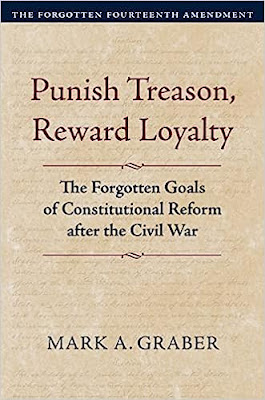
Mark A. Graber, Punish Treason, Reward Loyalty: The Forgotten Goals of Constitutional Reform after the Civil War (University of Kansas Press, 2023)
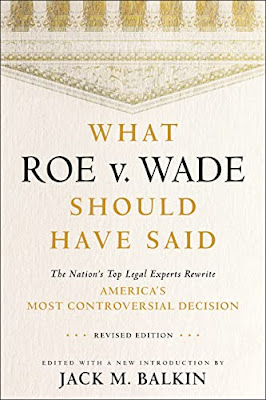
Jack M. Balkin, What Roe v. Wade Should Have Said: The Nation's Top Legal Experts Rewrite America's Most Controversial Decision - Revised Edition (NYU Press, 2023)

Andrew Koppelman, Burning Down the House: How Libertarian Philosophy Was Corrupted by Delusion and Greed (St. Martin’s Press, 2022)

Gerard N. Magliocca, Washington's Heir: The Life of Justice Bushrod Washington (Oxford University Press, 2022)
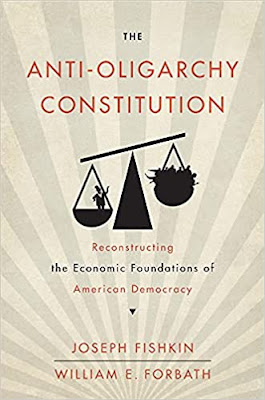
Joseph Fishkin and William E. Forbath, The Anti-Oligarchy Constitution: Reconstructing the Economic Foundations of American Democracy (Harvard University Press, 2022)
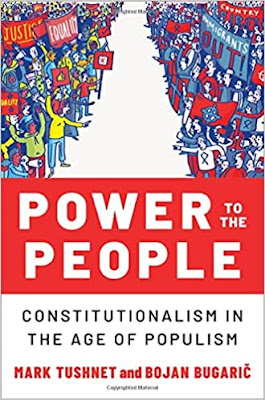
Mark Tushnet and Bojan Bugaric, Power to the People: Constitutionalism in the Age of Populism (Oxford University Press 2021).

Mark Philip Bradley and Mary L. Dudziak, eds., Making the Forever War: Marilyn B. Young on the Culture and Politics of American Militarism Culture and Politics in the Cold War and Beyond (University of Massachusetts Press, 2021).

Jack M. Balkin, What Obergefell v. Hodges Should Have Said: The Nation's Top Legal Experts Rewrite America's Same-Sex Marriage Decision (Yale University Press, 2020)

Frank Pasquale, New Laws of Robotics: Defending Human Expertise in the Age of AI (Belknap Press, 2020)

Jack M. Balkin, The Cycles of Constitutional Time (Oxford University Press, 2020)

Mark Tushnet, Taking Back the Constitution: Activist Judges and the Next Age of American Law (Yale University Press 2020).

Andrew Koppelman, Gay Rights vs. Religious Liberty?: The Unnecessary Conflict (Oxford University Press, 2020)

Ezekiel J Emanuel and Abbe R. Gluck, The Trillion Dollar Revolution: How the Affordable Care Act Transformed Politics, Law, and Health Care in America (PublicAffairs, 2020)

Linda C. McClain, Who's the Bigot?: Learning from Conflicts over Marriage and Civil Rights Law (Oxford University Press, 2020)
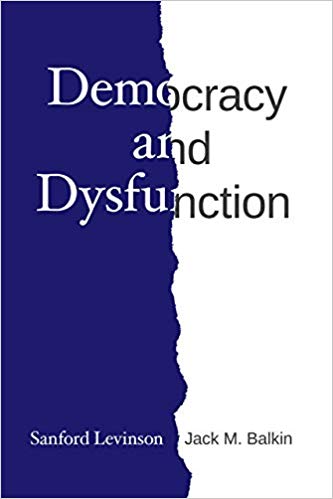
Sanford Levinson and Jack M. Balkin, Democracy and Dysfunction (University of Chicago Press, 2019)

Sanford Levinson, Written in Stone: Public Monuments in Changing Societies (Duke University Press 2018)

Mark A. Graber, Sanford Levinson, and Mark Tushnet, eds., Constitutional Democracy in Crisis? (Oxford University Press 2018)

Gerard Magliocca, The Heart of the Constitution: How the Bill of Rights became the Bill of Rights (Oxford University Press, 2018)

Cynthia Levinson and Sanford Levinson, Fault Lines in the Constitution: The Framers, Their Fights, and the Flaws that Affect Us Today (Peachtree Publishers, 2017)

Brian Z. Tamanaha, A Realistic Theory of Law (Cambridge University Press 2017)

Sanford Levinson, Nullification and Secession in Modern Constitutional Thought (University Press of Kansas 2016)

Sanford Levinson, An Argument Open to All: Reading The Federalist in the 21st Century (Yale University Press 2015)

Stephen M. Griffin, Broken Trust: Dysfunctional Government and Constitutional Reform (University Press of Kansas, 2015)

Frank Pasquale, The Black Box Society: The Secret Algorithms That Control Money and Information (Harvard University Press, 2015)

Bruce Ackerman, We the People, Volume 3: The Civil Rights Revolution (Harvard University Press, 2014)
Balkinization Symposium on We the People, Volume 3: The Civil Rights Revolution

Joseph Fishkin, Bottlenecks: A New Theory of Equal Opportunity (Oxford University Press, 2014)

Mark A. Graber, A New Introduction to American Constitutionalism (Oxford University Press, 2013)

John Mikhail, Elements of Moral Cognition: Rawls' Linguistic Analogy and the Cognitive Science of Moral and Legal Judgment (Cambridge University Press, 2013)

Gerard N. Magliocca, American Founding Son: John Bingham and the Invention of the Fourteenth Amendment (New York University Press, 2013)

Stephen M. Griffin, Long Wars and the Constitution (Harvard University Press, 2013)

Andrew Koppelman, The Tough Luck Constitution and the Assault on Health Care Reform (Oxford University Press, 2013)

James E. Fleming and Linda C. McClain, Ordered Liberty: Rights, Responsibilities, and Virtues (Harvard University Press, 2013)
Balkinization Symposium on Ordered Liberty: Rights, Responsibilities, and Virtues

Andrew Koppelman, Defending American Religious Neutrality (Harvard University Press, 2013)

Brian Z. Tamanaha, Failing Law Schools (University of Chicago Press, 2012)

Sanford Levinson, Framed: America's 51 Constitutions and the Crisis of Governance (Oxford University Press, 2012)

Linda C. McClain and Joanna L. Grossman, Gender Equality: Dimensions of Women's Equal Citizenship (Cambridge University Press, 2012)

Mary Dudziak, War Time: An Idea, Its History, Its Consequences (Oxford University Press, 2012)

Jack M. Balkin, Living Originalism (Harvard University Press, 2011)

Jason Mazzone, Copyfraud and Other Abuses of Intellectual Property Law (Stanford University Press, 2011)

Richard W. Garnett and Andrew Koppelman, First Amendment Stories, (Foundation Press 2011)

Jack M. Balkin, Constitutional Redemption: Political Faith in an Unjust World (Harvard University Press, 2011)

Gerard Magliocca, The Tragedy of William Jennings Bryan: Constitutional Law and the Politics of Backlash (Yale University Press, 2011)

Bernard Harcourt, The Illusion of Free Markets: Punishment and the Myth of Natural Order (Harvard University Press, 2010)

Bruce Ackerman, The Decline and Fall of the American Republic (Harvard University Press, 2010)
Balkinization Symposium on The Decline and Fall of the American Republic

Ian Ayres. Carrots and Sticks: Unlock the Power of Incentives to Get Things Done (Bantam Books, 2010)

Mark Tushnet, Why the Constitution Matters (Yale University Press 2010)
Ian Ayres and Barry Nalebuff: Lifecycle Investing: A New, Safe, and Audacious Way to Improve the Performance of Your Retirement Portfolio (Basic Books, 2010)
.jpg)
Jack M. Balkin, The Laws of Change: I Ching and the Philosophy of Life (2d Edition, Sybil Creek Press 2009)

Brian Z. Tamanaha, Beyond the Formalist-Realist Divide: The Role of Politics in Judging (Princeton University Press 2009)
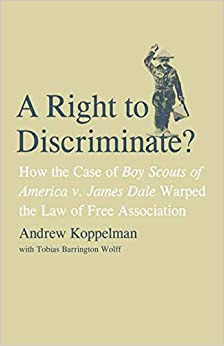
Andrew Koppelman and Tobias Barrington Wolff, A Right to Discriminate?: How the Case of Boy Scouts of America v. James Dale Warped the Law of Free Association (Yale University Press 2009)

Jack M. Balkin and Reva B. Siegel, The Constitution in 2020 (Oxford University Press 2009)
Heather K. Gerken, The Democracy Index: Why Our Election System Is Failing and How to Fix It (Princeton University Press 2009)

Mary Dudziak, Exporting American Dreams: Thurgood Marshall's African Journey (Oxford University Press 2008)

David Luban, Legal Ethics and Human Dignity (Cambridge Univ. Press 2007)

Ian Ayres, Super Crunchers: Why Thinking-By-Numbers is the New Way to be Smart (Bantam 2007)

Jack M. Balkin, James Grimmelmann, Eddan Katz, Nimrod Kozlovski, Shlomit Wagman and Tal Zarsky, eds., Cybercrime: Digital Cops in a Networked Environment (N.Y.U. Press 2007)

Jack M. Balkin and Beth Simone Noveck, The State of Play: Law, Games, and Virtual Worlds (N.Y.U. Press 2006)

Andrew Koppelman, Same Sex, Different States: When Same-Sex Marriages Cross State Lines (Yale University Press 2006)
Brian Tamanaha, Law as a Means to an End (Cambridge University Press 2006)
Sanford Levinson, Our Undemocratic Constitution (Oxford University Press 2006)
Mark Graber, Dred Scott and the Problem of Constitutional Evil (Cambridge University Press 2006)
Jack M. Balkin, ed., What Roe v. Wade Should Have Said (N.Y.U. Press 2005)
Sanford Levinson, ed., Torture: A Collection (Oxford University Press 2004)
Balkin.com homepage
Bibliography
Conlaw.net
Cultural Software
Writings
Opeds
The Information Society Project
BrownvBoard.com
Useful Links
Syllabi and Exams